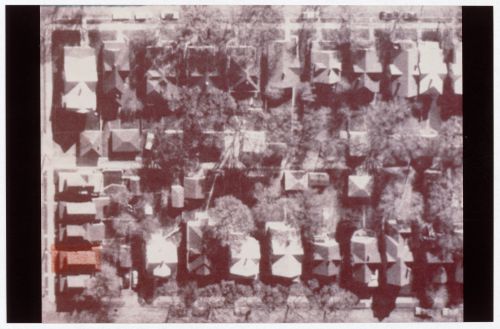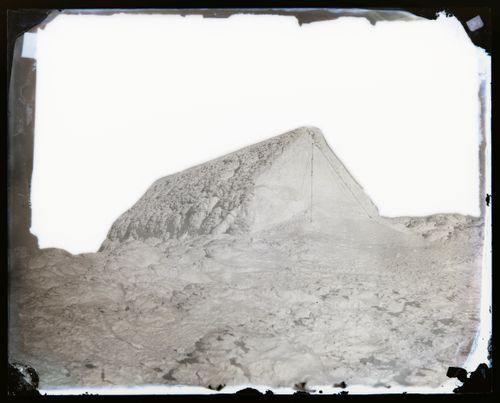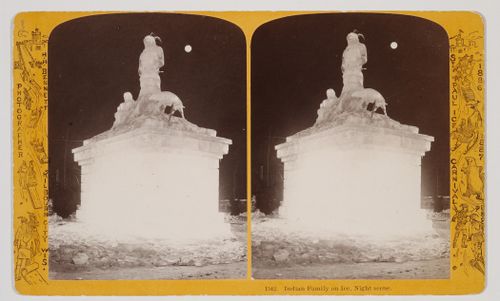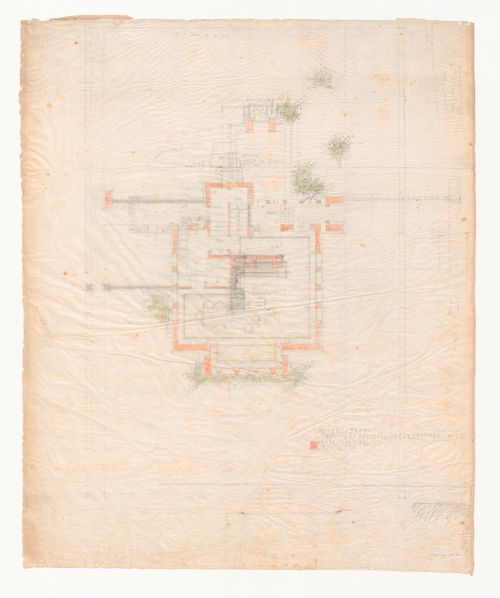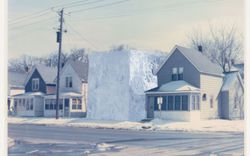ARCH287001
circa 1971
né numérique, photographies
AP207.S1.1972.PR01.003
Description:
Most common file formats: JPEG File Interchange Format, Tagged Image File Format, Microsoft Word for Windows.
2006 - 2015
Digitized sketches, photographs, and project descriptions, Ice House II
Actions:
AP207.S1.1972.PR01.003
Description:
Most common file formats: JPEG File Interchange Format, Tagged Image File Format, Microsoft Word for Windows.
né numérique, photographies
2006 - 2015
dessins
AP207.S1.1972.PR01.002
circa 1972
dessins
circa 1972
View of Tip Top House covered in rime ice, Mt. Washington, New Hampshire, United States of America
PH1984:0977:507
Description:
This view of the Tip Top House covered in ice was taking during the Huntington-Hitchcock Expedition to the summit of Mount Washington in the winter of 1870-1871
ca. 1860-1880
View of Tip Top House covered in rime ice, Mt. Washington, New Hampshire, United States of America
Actions:
PH1984:0977:507
Description:
This view of the Tip Top House covered in ice was taking during the Huntington-Hitchcock Expedition to the summit of Mount Washington in the winter of 1870-1871
photographies
PH1983:0019:026
ca. 1870
Lake ice and snow, houses in the distance, Duluth London Addition, Minnesota
Actions:
PH1983:0019:026
photographies
ca. 1870
PH1985:0413
Description:
The sculpture depicts what seems to be a man standing, dressed in Indigenous clothing with regalia and tomahawk, and a woman seated on his right side and an animal (dog?) standing on his left. This way of representing an Indigenous couple reflects 19th century settler notions of gender roles. In Indigenous families the woman is the head of the house and would be the one standing, with the man beside her as her equal. The Saint Paul Ice Carnival, founded in 1886, is now known as the Saint Paul Winter Carnival.
circa 1886-1888
Stereoview of an illuminated ice sculpture at the Saint Paul Ice Carnival representing two Indigenous persons and animal on a base, Saint Paul, Minnesota, United States
Actions:
PH1985:0413
Description:
The sculpture depicts what seems to be a man standing, dressed in Indigenous clothing with regalia and tomahawk, and a woman seated on his right side and an animal (dog?) standing on his left. This way of representing an Indigenous couple reflects 19th century settler notions of gender roles. In Indigenous families the woman is the head of the house and would be the one standing, with the man beside her as her equal. The Saint Paul Ice Carnival, founded in 1886, is now known as the Saint Paul Winter Carnival.
DR1980:0060:002
Description:
- This first floor plan, with the perspective (DR1980:0060:001) and the second floor plan (DR1980:0060:003) form a set of early presentation drawings. The scale is probably 1/4" = 1' (see object file, de Long report). This plan indicates reworking in the porch/stair and service entrance areas which appear in Hitchcock's book (plate 201) and were built as sketched. The fireplace and seat in the living room were shifted and subsequently built as sketched, as was the ice room. The wall added to the right was shifted back in the final Hitchcock plan. The entry behind the livingroom has sketched-in doors at the rear, as seen in the Hitchcock drawing -- other doors do not yet appear, nor does the garden court. The house became more private in the final adjustments to the site. Wright's further changes are: the wall extending left was crossed out; a freehand wall is roughed in to right; heavy masonry walls are roughed in to left over former wall. (There are other miscellaneous markings and crosshatchings in the reworking.)
architecture
1915
First floor plan for Emil Bach House, Chicago, Illinois
Actions:
DR1980:0060:002
Description:
- This first floor plan, with the perspective (DR1980:0060:001) and the second floor plan (DR1980:0060:003) form a set of early presentation drawings. The scale is probably 1/4" = 1' (see object file, de Long report). This plan indicates reworking in the porch/stair and service entrance areas which appear in Hitchcock's book (plate 201) and were built as sketched. The fireplace and seat in the living room were shifted and subsequently built as sketched, as was the ice room. The wall added to the right was shifted back in the final Hitchcock plan. The entry behind the livingroom has sketched-in doors at the rear, as seen in the Hitchcock drawing -- other doors do not yet appear, nor does the garden court. The house became more private in the final adjustments to the site. Wright's further changes are: the wall extending left was crossed out; a freehand wall is roughed in to right; heavy masonry walls are roughed in to left over former wall. (There are other miscellaneous markings and crosshatchings in the reworking.)
architecture
articles
Notes pour un itinéraire américain
Elisabetta Trincherini sur le fonds Gianni Pettena
Actions:
Projet
AP207.S1.1979.PR02
Description:
The project series documents "Un’idea di Bellazza" a project by Pettena, realized in 1979. The aim of the project was to choose a building to represent an idea of beauty. Pettena selected a Medici era pyramid, used as an ice house, in the Cascine di Firenze, in Florence. The project series contains project descriptions in Italian and in English, and photographs of the choosen pyramid.
2013-2017
Un’idea di Bellazza [An idea of Beauty] (1979)
Actions:
AP207.S1.1979.PR02
Description:
The project series documents "Un’idea di Bellazza" a project by Pettena, realized in 1979. The aim of the project was to choose a building to represent an idea of beauty. Pettena selected a Medici era pyramid, used as an ice house, in the Cascine di Firenze, in Florence. The project series contains project descriptions in Italian and in English, and photographs of the choosen pyramid.
Project
2013-2017
Série(s)
AP207.S1
Description:
The series documents Pettena’s artistic, architectural and design projects from 1966 to 2018. It includes material related to his performances, installations, furniture designs, architectural projects, films he produced, and series of photographic projects. The series includes projects created during Pettena’s residencies in the United States, such as “Vestirsi Di Siede [Wearable Chairs]” (1971), “Ice House I” (1971) and “Ice House II” (1972), and “Tumbleweeds Catcher” (1972). The series also contains material showing Pettena’s growing interest in the preservation and conservation of historical buildings with projects like the new Town Hall of Canazei (1990-1997) and the preservation and conversion of the Forte Inglese in Portoferraio (1992). The presence of nature in architecture and it’s influence on the architect’s work, a recurring theme in Pettena’s work, is also documented in this series with projects such as his proposal “Grass architecture” for the Trigon competition in 1971, the photographic series “Case Conquistate Dal Verde” (1985), and the installation “Architecture forgiven by nature” (2017). The series contains sketches, renderings, and plans, either originals or reprographic copies, and photographs for installation projects and his furniture designs. It also contains drawings, notes, storyboards, and photographs of the performances. There are also films, in digital formats, and film stills for short movie projects produced by Pettena. Also included, are two models: a small wooden model for ”Rumble” sofa” (1967) and a model of for “Archipensierio” (2001-2018) installation of 2001. Finally, the series contains, sketches, floor plans, site plans, sections and elevations, reference drawings and photographs, proposals, and cost estimates for architectural projects such as the Canazei Town Hall (1990-1997), Fort Inglese conversion (1992), and for Pettena’s residence on Elba (1972-2012).
1966-2018
Works
Actions:
AP207.S1
Description:
The series documents Pettena’s artistic, architectural and design projects from 1966 to 2018. It includes material related to his performances, installations, furniture designs, architectural projects, films he produced, and series of photographic projects. The series includes projects created during Pettena’s residencies in the United States, such as “Vestirsi Di Siede [Wearable Chairs]” (1971), “Ice House I” (1971) and “Ice House II” (1972), and “Tumbleweeds Catcher” (1972). The series also contains material showing Pettena’s growing interest in the preservation and conservation of historical buildings with projects like the new Town Hall of Canazei (1990-1997) and the preservation and conversion of the Forte Inglese in Portoferraio (1992). The presence of nature in architecture and it’s influence on the architect’s work, a recurring theme in Pettena’s work, is also documented in this series with projects such as his proposal “Grass architecture” for the Trigon competition in 1971, the photographic series “Case Conquistate Dal Verde” (1985), and the installation “Architecture forgiven by nature” (2017). The series contains sketches, renderings, and plans, either originals or reprographic copies, and photographs for installation projects and his furniture designs. It also contains drawings, notes, storyboards, and photographs of the performances. There are also films, in digital formats, and film stills for short movie projects produced by Pettena. Also included, are two models: a small wooden model for ”Rumble” sofa” (1967) and a model of for “Archipensierio” (2001-2018) installation of 2001. Finally, the series contains, sketches, floor plans, site plans, sections and elevations, reference drawings and photographs, proposals, and cost estimates for architectural projects such as the Canazei Town Hall (1990-1997), Fort Inglese conversion (1992), and for Pettena’s residence on Elba (1972-2012).
Series
1966-2018
